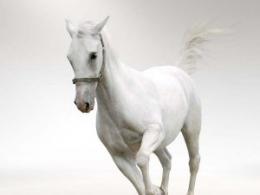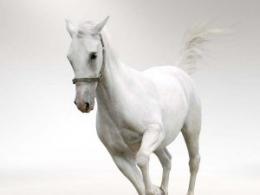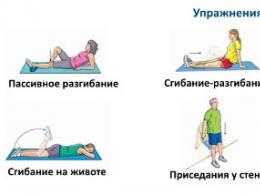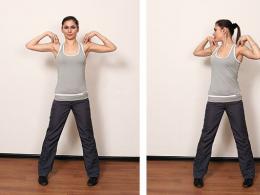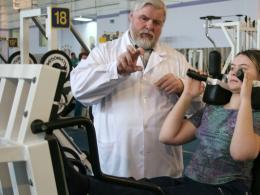At what age are children sent to hockey? What time did the pros start playing? Hockey for children: how old and what is the use
Hockey matches are full of drama that can enchant even the most indifferent to sports child. In addition, playing on the ice arena is very beneficial for health and development. However, there are also enough pitfalls in hockey, because, firstly, it is a rather tough sport, and secondly, it is expensive. AiF-SK has prepared instructions for parents on when it is better to let their child go in for this sport, as well as how much the equipment will cost.
Ready age
Doctors and hockey players themselves advise children under the age of four not to play this sport. Until this age, the child is actively forming bone tissue, so injuries can lead to serious consequences. Of course, this does not mean that after four years a child can be safely put on skates and be sure that no somersaults on the ice will lead to violations of the musculoskeletal system.
Most hockey schools take children to groups from the age of 5, however, orthopedists recommend an even later date - 7-8 years. If a novice athlete has talent, then a later age will not prevent him from appearing on the ice arena. One example of this is the story of the Soviet hockey player, two-time Olympic champion and eight-time world champion Valery Kharlamov, who first went on the ice at the age of 7. The same was true for Russian hockey player Pavel Datsyuk, the center forward of the KHL team SKA.
Hockey uniform
A novice hockey player will need a whole set of special equipment, and the athlete's parents, in turn, will need money for all the necessary sports equipment. And there is no need to save money here, because this is protection for the child, which will insure him on the ice and, probably, help to avoid serious injuries.
Skates. Since 1927, the NHL has banned the use of homemade skates. This fact should convey to parents the importance of the degree of quality of bladed boots. Skates should fit snugly around the foot and be slightly larger than the size of the athlete's foot - so that the toes do not rest on the nose of the boot. But do not buy skates too "for growth", because then the boots will not fix the ankle. It is also worth considering that the size scale of skates has not only length, but also fullness: the D or R marking is placed on skates for a narrow foot, and the letters EE or W mean that the skates will suit the owners of feet with greater fullness. The starting price of a pair of hockey skates is 1,500 rubles. The most expensive children's skates on the shelves of mass markets cost about 50,000 rubles.
Helmet. Professional hockey players consider the helmet to be the most important item in their equipment. The helmet protects the skull, brain and eyes of the athlete. In addition, life sometimes depends on its strength. When you hit your head on the ice, you can get a lot of trouble, if not fatal injuries. The task of the helmet is to protect the hockey player from all this. Helmets are of two types - narrow and wide. You need to choose depending on the shape of the child's head, the lower edge of the helmet in front should not be 1.5-2 centimeters above the level of the eyebrows. The cost of a helmet in stores starts at 1,700 rubles and ends at around 15,000.
Bib. It is also called a shell - a plastic-fabric vest that insures the player's chest and protects the forearms. The protector of the back of the shell (lower edge) should reach the athlete's shorts, and the protectors on the arms, on the contrary, should not touch the edges with other equipment. The right bib will protect the hockey player from popular power moves on the ice, such as pushing. The cheapest shell we found on sale costs 950 rubles. The most expensive is 8,000 rubles.
Hockey underwear. The ice arena is not a football field, and the temperature is low there. Therefore, the child will need to wear special underwear. On average, such a kit costs from 1,500 rubles, but there are also luxury options, the price of which exceeds 10,000 rubles.
Shields. Protection of shins, groin and hands is made of plastic and equipped with elastic bands for fastening. When choosing shin guards, you need to remember that the top edge should be under the knee, the bottom should reach the end of the skates. The same should be considered when choosing elbow pads. Do not forget also about the so-called "shells" - a protector for the groin area. It costs from 1,000 rubles to 5,000 rubles, while hand protection will cost you from 1,200 rubles to 8,000 rubles, and shin protectors - from 2,500 rubles to 9,500 rubles.
Leggings. These are special hockey gloves, reinforced on the back and finished with leather on the palms so that the player can comfortably and firmly hold the stick. Leggings cost from 2,800 rubles, the maximum price of a pair is 11,200 rubles.
Shorts and shirt. This piece of equipment is worn over all clothing and protective elements. It is the shorts and shirt that contain information about the team, the number and surname of a particular player. The kit costs from 1,500 rubles to 3,000 rubles.
Hockey stick. When choosing a stick for a child, you need to pay attention to the bend of the hook - it should be straight. Only in this way will a novice hockey player be able to decide whether the left or right grip is more convenient for him. Another parameter is the length. It should end at the level of the nose of a child standing in ordinary shoes. Amateur clubs cost from 400 rubles, the price of professional sticks exceeds 20,000 rubles.
Total - at least 15,000 rubles, if you buy everything the cheapest.
Cost of lessons
The cost of classes in a hockey group, for example, in Stavropol, is on average 200 rubles per hour. Individual lessons with a trainer, of course, will cost much more. About 500-1,500 rubles will leak from the parent's wallet after each hourly workout. This price tag, as a rule, is dictated by the status and sporting achievements of the mentor.
These prices are subject to availability of own equipment. However, there is a practice of renting a form - in this way you can partially save money, especially since the child is constantly growing, which means that the equipment will have to be systematically updated. Cons - dimensional discrepancy in shape, because the equipment available has a certain versatility.
Hockey matches are full of drama that can enchant even the most indifferent to sports child. In addition, playing on the ice arena is very beneficial for health and development. However, there are also enough pitfalls in hockey, because, firstly, it is a rather tough sport, and secondly, it is expensive. AiF-SK has prepared instructions for parents on when it is better to let their child go in for this sport, as well as how much the equipment will cost.
Ready age
Doctors and hockey players themselves advise children under the age of four not to play this sport. Until this age, the child is actively forming bone tissue, so injuries can lead to serious consequences. Of course, this does not mean that after four years a child can be safely put on skates and be sure that no somersaults on the ice will lead to violations of the musculoskeletal system.
Most hockey schools take children into groups from the age of 5, however, orthopedists recommend an even later date - 7-8 years. If a novice athlete has talent, then a later age will not prevent him from appearing on the ice arena. One example of this is the story of the Soviet hockey player, two-time Olympic champion and eight-time world champion Valery Kharlamov, who first went on the ice at the age of 7. The same was true for Russian hockey player Pavel Datsyuk, the center forward of the KHL team SKA.
Hockey uniform
A novice hockey player will need a whole set of special equipment, and the athlete's parents, in turn, will need money for all the necessary sports equipment. And there is no need to save money here, because this is protection for the child, which will insure him on the ice and, probably, help to avoid serious injuries.
Skates. Since 1927, the NHL has banned the use of homemade skates. This fact should convey to parents the importance of the degree of quality of bladed boots. Skates should fit snugly around the foot and be slightly larger than the size of the athlete's foot - so that the toes do not rest against the nose of the boot. But do not buy skates too "for growth", because then the boots will not fix the ankle. It is also worth considering that the size scale of skates has not only length, but also fullness: the D or R marking is placed on skates for a narrow foot, and the letters EE or W mean that the skates will suit the owners of feet with greater fullness. The starting price for a pair of hockey skates is 1,500 rubles. The most expensive children's skates on the shelves of mass markets cost about 50,000 rubles.
Helmet. Professional hockey players consider the helmet to be the most important item in their equipment. The helmet protects the skull, brain and eyes of the athlete. In addition, life sometimes depends on its strength. When you hit your head on the ice, you can get a lot of trouble, if not fatal injuries. The task of the helmet is to protect the hockey player from all this. Helmets are of two types - narrow and wide. You need to choose depending on the shape of the child's head, the lower edge of the helmet in front should not be 1.5-2 centimeters above the level of the eyebrows. The cost of a helmet in stores starts at 1,700 rubles and ends at around 15,000.
Bib. It is also called a shell - a plastic-fabric vest that insures the player's chest and protects the forearms. The protector of the back of the shell (lower edge) should reach the athlete's shorts, and the protectors on the arms, on the contrary, should not touch the edges with other equipment. The right bib will protect the hockey player from popular power moves on the ice, such as pushing. The cheapest shell we found on sale costs 950 rubles. The most expensive - 8,000 rubles.
Hockey underwear. The ice arena is not a football field, and the temperature is low there. Therefore, the child will need to wear special underwear. On average, such a kit costs from 1,500 rubles, but there are also luxury options, the price of which exceeds 10,000 rubles.
Shields. Protection of shins, groin and hands is made of plastic and equipped with elastic bands for fastening. When choosing shin guards, you need to remember that the top edge should be under the knee, the bottom should reach the end of the skates. The same should be considered when choosing elbow pads. Do not forget also about the so-called "shells" - a protector for the groin area. It costs from 1,000 rubles to 5,000 rubles, while hand protection will cost you from 1,200 rubles to 8,000 rubles, and shin protectors - from 2,500 rubles to 9,500 rubles.
Leggings. These are special hockey gloves reinforced on the back and finished with leather on the palms so that the player can comfortably and firmly hold the stick. Leggings cost from 2,800 rubles, the maximum price of a pair is 11,200 rubles.
Shorts and shirt. This piece of equipment is worn over all clothing and protective elements. It is the shorts and shirt that contain information about the team, the number and surname of a particular player. The kit costs from 1,500 rubles to 3,000 rubles.
Hockey stick. When choosing a club for a child, you need to pay attention to the bend of the hook - it must be straight. Only in this way will a novice hockey player be able to decide whether the left or right grip is more convenient for him. Another parameter is the length. It should end at the level of the nose of a child standing in ordinary shoes. Amateur clubs cost from 400 rubles, the price of professional sticks exceeds 20,000 rubles.
Total - at least 15,000 rubles, if you buy all the cheapest.
Cost of lessons
The cost of classes in a hockey group, for example, in Stavropol, is on average 200 rubles per hour. Individual lessons with a trainer, of course, will cost much more. About 500 -1,500 rubles will leak from the parent's wallet after each hourly workout. This price tag, as a rule, is dictated by the status and sporting achievements of the mentor.These prices are subject to availability of own equipment. However, there is a practice of renting a form - in this way you can partially save money, especially since the child is constantly growing, which means that the equipment will have to be systematically updated. Cons - dimensional discrepancy between the shape, because the equipment available has a certain versatility.
Hockey is a sport for real men. It forms the child as a person and tempers his physical abilities.
Many people around the world love this sport. They gather in front of TV screens every time there is a championship or even an ordinary friendly match.
Kids who are fond of this sport strive to become famous hockey players and conquer the world stage.
The child will be interested in doing it even if he does not plan to become a professional - he will have fun chasing the puck and playing with classmates. And if he starts playing hockey seriously, then in the future he will be able to break into some well-known team and earn money from his skills.
We will talk about the advantages of hockey and how old you can give a child to it.
At what age can you go to the section?
To start learning hockey itself, the child will first need to learn how to skate. This is a rather difficult occupation, so you need to start mastering it at a very early age.
Parents have two ways to teach their child to ride. They either need to give the child to a hockey club, where he will be trained to ride on ice. Or send the little one to the figure skating section.
Both there and there the kid will be taught to drive professionally. When the child can stand freely on skates, he can be transferred to the hockey section.
Professionals recommend choosing a figure skating section at the initial stages. In their opinion, there children are taught to skate better than in a hockey club, and they also train their flexibility, agility and speed.
You can “put” a child on skates from the age of three or four. And hockey itself can be practiced no earlier than six or seven years.
Medical contraindications
So that the child does not endanger his health, we recommend that parents familiarize themselves with the contraindications. If the child has at least one of these, we advise you to choose another sport:
- Problems vision: nearsightedness and farsightedness.
- Vice hearts. It doesn’t matter if the child had it from birth, or appeared during life.
- Problems with the nervous system.
- disturbed work of the neck and cervical vertebrae.
- Improper blood flow in the brain.
- Running flat feet - 3 degree.
If the baby has asthma, obesity, problems with the spine, then it is not only possible, but necessary, to send him to the hockey section. This sport will help get rid of problems and make the child healthy.

But without prior consultation with the doctor, we do not recommend giving the baby to hockey. It is better to go to the hospital, take all the necessary tests, and ask the doctor whether it is possible to deal with the child or not. So you can be sure that nothing will happen to him during training, and he will be able to calmly endure all the loads that he will be given. And the training of hockey players is very intense, so this issue needs to be given special attention.
Is it worth giving a girl to hockey?
On ice, hockey players reach tremendous speeds, hit each other against the sides, play aggressively and do not spare opponents. Therefore, many people mistakenly believe that only boys are involved in this sport. But it's not. There are also women's hockey teams. Moreover, their games are sometimes more exciting and interesting than those of boys.
If you do not know whether it is possible to give the baby to such a section, then we have prepared 6 arguments for you why it is worth doing:
- prospects . Women's hockey tournaments are becoming more and more popular both in the world and on the territory of the Russian Federation. Previously, such teams were created only in the west - in America and Canada. But now women's hockey is developing in Asia and the European Union. Here, in Russia, the authorities also began to support this direction of sports. They even adopted a government program that allowed more women's sections to open. So, girls can now develop in this direction too.
- Remember also that women's hockey is not very well developed at the moment. So far, the girl has few competitors here. Therefore, if she starts practicing right now, she can become the best in women's hockey, and go to the world championship in the future. But you can’t hesitate: every day more and more girls come to this sport, which means that the competition is growing.
- State support . The Russian government sees huge prospects for women's ice hockey teams for our country. It keeps them at a very high level. The Hockey Federation of the Russian Federation, the Ministry of Sports, and some heads of Russian regions are in favor of the development of the women's direction.
- This sport is Olympic . Women's hockey, like men's, is included in the program of the Olympic Games. World sports structures are thinking over suitable rules in order to hold competitions of this type. On the territory of Europe, they regularly (once every 12 months) organize sports camps, where hockey players are shown how to play correctly and are given all sorts of advice. And the state provides our athletes with insurance and a certain amount of money if they go to world competitions.
- Women's hockey is not as dangerous as men's. It will be very difficult for a girl to suffer during the game. The rules prohibit the use of various power techniques and aggressive play. If someone makes a reception and knocks another player down, then this person will be immediately disqualified. The main requirement for women is to wear masks. They must do so without fail. Regardless of which league they play - professional or youth. Therefore, a child can harm himself only through negligence - for example, if he twists his legs or falls on his buttocks and hurts them. And his opponents will not do anything to him.
- Long and illustrious career. World sports structures are loyal to the age of female hockey players. Age restrictions are adequate. Sometimes, even 40-year-old athletes appear on the field. This is convenient, because the hockey player will be able to return to “work” from maternity leave at any age.
But before giving the baby to this sport, talk to her. Find out if she likes hockey and ask if she would like to play it? If she answers yes to both questions, then you can safely give her to the section. But if the baby does not like this sport, then you do not need to torment her and give it by force.

The benefits of this sport
We present you a list of the positive moments of hockey:
- It is good for health . Hockey makes the little one physically stronger. It helps him fight various ailments. Be it allergic reactions, scoliosis, etc. During classes, the child strains all the muscles of the body. His musculoskeletal system begins to work faster and more clearly.
- Forms the personality of the child, his inner core . This sport will make your kid courageous, strong and brave. He will become a strong personality, and will be able to use the skills acquired here in the future.
- Builds team spirit . The kid will learn to work in a team. He will work for the benefit of the team in order to achieve a common goal.
Flaws

Hockey also has a number of disadvantages. Let's take a look at them:
- traumatism . This sport is really dangerous. Most often, hockey players have their teeth knocked out, and brain concussions are made. Other injuries (fractures of the limbs and injuries of the back) are very rare in children. Basically, they happen in professional leagues. Often, injuries occur due to the fact that athletes do not group well during falls. Therefore, you need to find a coach who will teach your child how to "fall" correctly. This is the key to a safe game.
- High competition . There is a lot of competition among hockey players. There are fewer really good teams that pay a lot than in football. And in order to get into them, the child must be the best in his section. And it’s more difficult to get into the national team here than in football. There are fewer places and a lot of work to be done.
- High cost of lessons . Hockey is very expensive. A lot of money will have to be spent on this, and not every family will agree to this. In small towns, for 4 months of classes, you will have to spend from one hundred to one hundred and fifty thousand rubles. And in Moscow and St. Petersburg the cost can be up to two hundred and fifty thousand.
On the Vikids portal, you can:
"Coward does not play hockey!" - everyone knows this line from the famous song, and indeed, hockey is not a sport for the faint of heart. About how hockey is useful for children, is it possible to send girls to hockey and how much it costs to equip a small athlete, read in this article.
Hockey is a spectacular and exciting game that gathers thousands of spectators in stadiums and in front of screens, and every boy dreamed of becoming the second Kharlamov at least once. Despite the fact that the path to the big leagues in this sport is not easy, the effort is worth it, and chasing the puck just for the soul of a child is also very useful.
From what age?
Hockey for children does not begin with stick work, but with skating, which is better to learn as early as possible. This can be done in two ways: by sending the child to the preparatory group of the hockey school, where he will be “put” on skates for several years, or by giving him to figure skating.
The second option is good because hockey coaches do not always pay enough attention to skating, while skaters are taught not only the correct technique, but also make them flexible, agile and fast.
You can start in the preparatory group or in the figure skating section at the age of 3-4, and go directly to hockey at the age of 6-7.
Medical contraindications
Hockey, like any sport, has a positive effect on the child's body, but it is not always possible to engage in it.
The main contraindications for health:
- myopia of any degree;
- congenital or acquired heart disease;
- some diseases of the nervous system
- instability of the cervical vertebrae;
- disorders of cerebral circulation;
- flat feet 3 degrees.
If a child suffers from asthma, overweight, osteochondrosis in the initial stage, or just gets sick often, hockey will help solve these problems. However, before giving the baby to this sport, be sure to consult a doctor.
Learn more about .
Boys and girls

Huge speed, tough game, mass fights with rivals... It may seem that hockey is the embodiment of an unfeminine sport, but girls play it no worse than boys, and sometimes even with great passion.
If you are in doubt about whether to send a girl to hockey, here are some convincing pros.
- Perspectives. Women's hockey is steadily gaining popularity: both around the world and in Russia. If earlier women's teams were concentrated mainly in Canada and the USA, today the development of this field of hockey is being carried out both in Asia and in Europe. In Russia, a program for the development of women's hockey was officially adopted: there are much more teams, which means that girls have room to grow. In addition, the competition in women's hockey is lower than in men's, making it easier to succeed at the professional level.
- Governmental support. Like figure skating, hockey is of particular importance for our country and is actively supported at the federal level. The development of both men's and women's hockey is carried out by the Russian Hockey Federation, the Ministry of Sports and individual heads of Russian regions.
- Olympic sport. Women's hockey is included in the list of Olympic disciplines, and for the last 5-6 years, world sports organizations have been trying to create all the conditions for future champions. Sports camps are held annually in Europe with experienced mentors, and talented hockey players in our country receive insurance and material assistance from the state for the duration of their participation in international tournaments.
- Less risk of injury. Women's hockey is much less traumatic than men's. This is due not only to the relatively soft style of play, but also to the fact that it is officially forbidden to use power moves, and all hockey players, regardless of position, play only in masks.
- Long career. In women's hockey, there are practically no age restrictions, and on the field you can meet athletes even over 40 years old. In addition, in the future, the hockey player may return to the ice after starting a family and having a child.
If a girl is energetic, sociable and, most importantly, interested in hockey, she can safely be given to this sport!
pros
Hockey for kids has a lot of benefits, and here are just a few.
- Hockey is good for health. This sport not only generally improves physical fitness and has a beneficial effect on a growing body, but also helps in the treatment and prevention of a number of diseases: from various allergies to scoliosis. In training, all muscles and the musculoskeletal system are worked out, and hardening and outdoor activities strengthen the immune system and help the body fight infections and bacteria better.
- Builds character. Hockey teaches children to be courageous, independent, responsible and quick-witted. Even if your child does not get into the Russian team, such positive qualities will definitely come in handy in the future.
- Learns to work in a team. Like any sport, hockey develops social skills in a child, teaches him altruism and teamwork. In addition, team spirit and well-coordinated work are especially important in hockey, so special attention is paid to this aspect.
- Improves coordination. If you have ever been to a hockey match, you must have been surprised at the speed with which athletes rush past you. The higher the level, the faster the game goes. In hockey, children are taught from an early age to be agile and fast, as well as to perfectly control their bodies.
Minuses

The disadvantages of hockey for children are in many ways similar to any other sports risks, and in general there are much fewer disadvantages than advantages. Let's analyze the most important ones.
First, this injury . Of course, injury is the first item on the list of parents' fears and, accordingly, the disadvantages of hockey. The most common injuries that sooner or later overtake a hockey player are knocked out teeth and concussion. More serious injuries - back, legs or head - are less common and mostly in professional sports. At the same time, it is realistic to protect a child from severe injuries: training according to an adequate program, a good coach and reliable protection will help in this. You also need to carefully monitor the condition of the skates - according to statistics, hockey players get 30% of all injuries when they fall.
Secondly, competition . In hockey, a really tough rivalry is unfolding between young athletes: there are fewer elite teams than in, and, as a rule, 1-2 people from a group are selected in them. In the same way, the number of places in the national team is limited, so either very talented or very stubborn players make their way to the top.
And finally financial question . Hockey for children is an expensive sport, and not every family can afford regular high-level classes: on average, a children's season costs 100-150 thousand rubles, and in capital cities with a "full package" this amount can reach up to 250 thousand . We will tell you more about spending on hockey lessons below.
How much do lessons cost?
Hockey for children is quite an expensive pleasure, and the lion's share of the costs is the equipment of a small athlete, which, as a rule, you have to buy on your own. On thematic forums, there are regularly stories about how fanatical parents go to a second job, open their own business, and even sell apartments so that their child can play hockey.
Of course, at the amateur level, everything is not so scary, and it is also possible to grow a talented pro hockey player without parting with real estate. And yet, this sport is an order of magnitude more expensive than football or. Let's figure out what the main expenses are waiting for you.
- Equipment. At first, the child will need: skates (from 2000 rubles), a helmet (from 2000 rubles), a set of protection (from 5000 rubles) and sportswear for protection (from 3000 rubles). Sticks and pucks are usually given out in the section, but if you are going to buy personal ones, they will cost from 1000 and from 100 rubles. respectively. An important point: during the season, a small hockey player can break 2-4 sticks, the protection also needs to be updated, so spending on equipment will be regular.
- Trips. Sports camps, away matches, seasonal camps in another city or even a country - all this is paid mainly from your own pocket and costs from several tens of thousands of rubles.
- Lessons. In hockey, there are two types of activities: basic training and “tackling”, for which the child is individually trained in skating technique, puck handling and other game moments. Basic training in the section can be free, but the rides are almost always paid extra. Also, sometimes the work of the second coach is additionally paid. The cost of classes depends on the conditions of the sports school and the level of the coaching staff.
How to choose a section?
Finding a good hockey school is not an easy task. This sport is not as common as, for example, football, and the “ice” often has to be shared with skaters and other teams. If your city has a choice of hockey sections, be guided by the following principles:
- the closer the ice rink is to the child's home or primary school, the better;
- the advantage of the section with a more convenient training schedule;
- if there is an opportunity to get the opinion of parents whose children are engaged in the section, use it;
- The most important thing is an experienced coach.
Summing up
Hockey is not just a sport, but a real school of life. In addition to good health and quick reaction, he will give the child such important qualities as courage, responsibility and determination. Even if in the future the little athlete does not get into the NHL and does not go to the Olympics, the character hardened on ice will be very useful in everyday life. At the same time, giving your kid to hockey, you must be prepared for serious expenses - especially if you plan to raise a champion.

